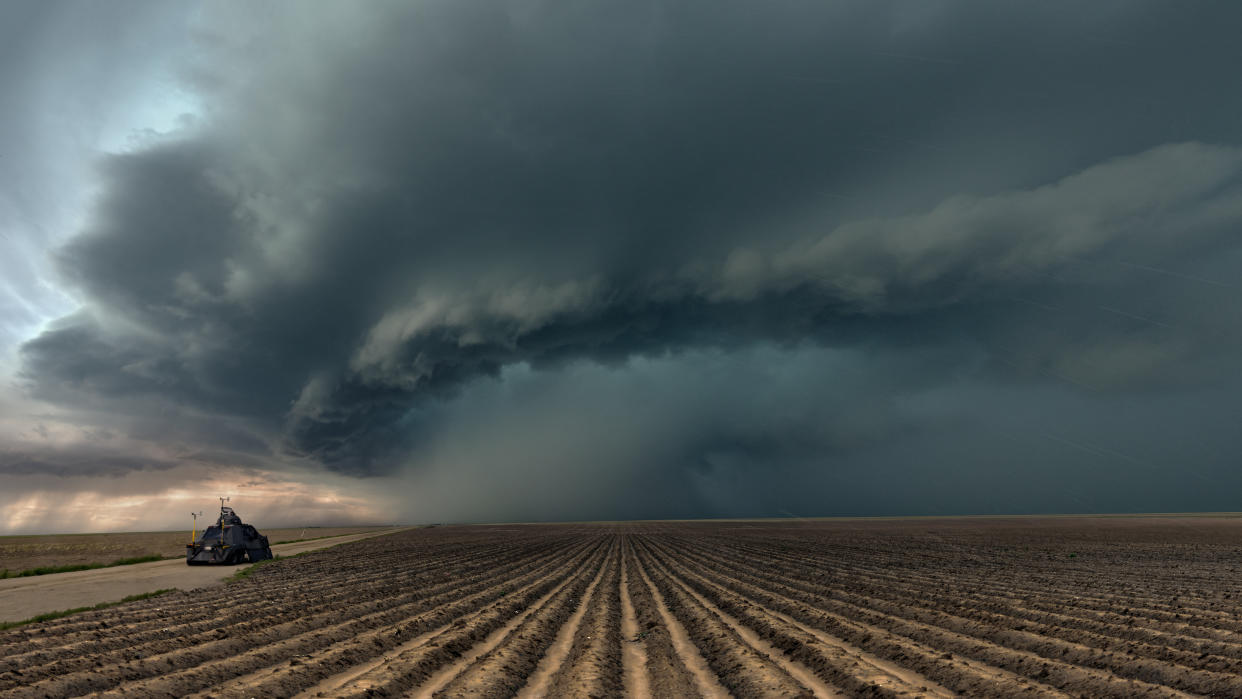Tornado safety tips from 3 experts to help you prepare for the worst

It is officially peak tornado season when many parts of the U.S. see an influx of tornadoes and severe flooding, which means it’s also a crucial time to learn tornado safety. At particular risk is the region known as tornado alley — the southern plains of the central U.S. which includes parts of Texas, Oklahoma, Kansas and Nebraska.
Historically, many of these states see the most tornadoes in June, but numbers are already high, with CNN reporting 21 tornadoes in the last few days alone.While the storms generally occur quickly, there are things you can do to seek shelter. Yahoo Lifestyle spoke with three experts about how to stay safe during a tornado.
Pay attention to the news.
“During threatening weather, listen to weather reports or observe threatening weather,” Ernst W. Kiesling, PE, PhD, executive director of the National Storm Shelter Association tells Yahoo Lifestyle. The best way to do this is NOAA weather radio, a “nationwide network of radio stations broadcasting continuous weather information directly from the nearest National Weather Service office.”
Know the difference between tornado watch and warning.
According to the National Weather Service, “watch” is equivalent to “be prepared,” while “warning” signals “take action.” In the case of a tornado watch, NWS recommends you “review and discuss your emergency plans and check supplies.” The event of a warning is more serious, indicating that a tornado has “been sighted” or “indicated by weather radar.”
Go to the central part of the lowest level of your building.
Andrew P. Ingersoll, PhD, a professor of planetary science at the California Institute of Technology, says getting ready before a storm is crucial. “The most important safety tip is preparedness. Know in advance what you are going to do,” Ingersoll says. Kiesling echoes this, suggesting you decide on where you will seek shelter. “Survey your surroundings and decide on the safest place,” says Kiesling. “If a strengthened place such as a designated shelter is available, go there; if not, plan to go to the central part of the lowest level of the building you are in.”
Stay away from the windows.
While the fear of an impending tornado may make you feel frozen in place, it’s important to guide yourself away from areas that could put you in danger of flying debris. “If you have a basement room, use it. Stay away from windows and walls,” says Ingersoll. “If you have no basement, use a closet on the first floor. If you live in a mobile home, know where the nearest shelter is.”
Don’t stay on upper floors — but do bring your mattress.
The worst areas to be during a tornado, according to Paul Markowski, PhD, professor of meteorology at Pennsylvania State University, are upper floors and near windows. But some items from your bedroom could be useful. “If you have a mattress...getting under it affords even greater protection,” Markowski tells Yahoo Lifestyle. “Put shoes on — in the event your home takes a direct hit, you will need to be able to walk through broken glass and boards with nails sticking out. If you have a helmet, put it on when you take cover.”
No matter what, keep the windows closed.
Markowski says to ignore the widespread belief that opening a window helps equalize air pressure. “We have known for many decades that this is a fallacy because homes aren't damaged by the pressure drop of the tornado. Most homes aren't airtight anyway, and they certainly won't be after debris starts puncturing the home!” he tells Yahoo Lifestyle. “Opening windows actually increases the chances of the home being damaged, because air readily rushes into the house, potentially compromising interior walls that help hold the structure together.”
Read more from Yahoo Lifestyle:
• People are freaking out over this massive storm cloud
• National Weather Service pens sweet thank-you note after severe blizzard rocks Minnesota, Wisconsin
• 87-year-old woman credits neighbor’s dog for saving her life after she fell in below-zero temperatures
Follow us on Instagram, Facebook, and Twitter for nonstop inspiration delivered fresh to your feed, every day.

